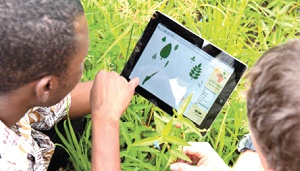African governments and stakeholders will have to deal with the stark realities of climate change variabilities, inadequate and unsustainable energy supply and increasing unemployment as nations seek economic solutions.
Climate change and its devastating impact on societal livelihoods have taken centre-stage among governments and development partners. It costs billions of dollars to mitigate, adapt and respond to the devastating effects of climate change when it occurs. Of the 20 countries worldwide that are the most vulnerable to climate change, 16 are in Africa. Yet the continent is the least contributor to greenhouse emissions that cause climate change.
As of today, nearly 600 million Africans still lack access to electricity – which is more than 1.3 times the population of the EU. Africa’s continuous economic growth, coupled with the increasing number of citizens connecting to the national grid, will inevitably lead to a rise in energy demand and carbon dioxide (CO2) emissions related to energy production.
Hence, while addressing the urgent energy requirements remains a priority, it is crucial to consider environmental and climate change concerns. This approach will allow the continent to gradually transition toward a sustainable, low-carbon growth trajectory and embrace a greener economy.
Green technology presents policymakers with a sustainable pathway for growth while simultaneously generating employment opportunities, particularly for the youth. Deloitte estimates that by 2050 over 300 million additional Green Collar jobs could be created. Since green technologies span multiple sectors, integrating them into national growth policies would open up many job prospects. Sectors such as renewable energy, mobility, smart food systems and the green-built environment rely on green technologies to foster climate resilience and adaptation.
Encouragingly, government and private sector stakeholders are increasing their investments to address climate change. For instance, at the recent Cop27 pledges exceeding US$230million were made to the Adaptation Fund, and the African Development Bank Multi-donor Trust fund stands at US$25.71 million. Additionally, private companies are actively funding clean tech and climate resilience initiatives.
Seizing the green technology opportunity in Africa: the policies needed
Policymaking plays a central role in positioning Africa as a green technology frontier. By embracing the policy recommendations provided, Africa can leverage existing and emerging green technologies to address its climate, energy, and unemployment issues.
Implement green budgeting practices for government and donor funding to support innovative green growth
Governments, being the largest spenders in most developing countries, have an opportunity to drive sustainable change through the adoption of green budgeting and financing. By prioritising investments in green projects and incorporating green considerations into infrastructure and programme financing, policymakers can stimulate the demand for green technologies. This in turn encourages existing companies and new entrants to develop the necessary competencies to meet this demand.
Furthermore, development partners play a significant role in financing government budgets and development projects. These partners are recommended to support projects with green growth as their foundation directly. This approach addresses climate challenges and creates direct and indirect opportunities for the youth. Donor partners should invest in and support green growth technologies and initiatives, particularly in priority sectors. By doing so, governments and development partners can drive the demand for green technologies and guide the private sector on required skills and projects to pursue.
Design new investment tools and mechanisms for innovators of green technologies
To create a demand for green and climate-smart solutions, it is crucial to have a sufficient supply of affordable and context-relevant green technologies. Policymakers can facilitate this by establishing partnerships with the private sector to establish green innovation funds that support research and development and assist innovators in bringing their products to market.
One example of such a partnership is the Rwandan Innovation Fund, which operates as a public-private collaboration and invests in innovation with a specific focus on sustainability. This fund has invested in companies like Metro Mobility, enabling the expansion of their low-to-zero vehicle subscription solution throughout Africa.
By developing new investment initiatives targetting green solutions, companies operating in this sector can experience growth and generate both direct and indirect employment opportunities. Additionally, employees within these companies can acquire valuable on-the-job experience and develop their skills for future employment prospects.
Develop and expand climate change toolkits for training, fellowships and internship
While many governments may express the desire to support green climate policies and technologies, there is a need for enhanced technical expertise. The ability to write climate project proposals and develop training curricula and fellowships requires a specific skill set that policymakers may still need to acquire. It is crucial to develop toolkits that can assist in conceptualising climate outcomes and formulating policies that promote job creation.
Policymakers should prioritise the provision of technical support in the design and implementation of green growth initiatives. This includes linking these initiatives to skills development programmes to generate employment opportunities. By doing so, it becomes possible to cultivate the technical expertise required to access funding for green technology projects.
Additionally, educators can be equipped with the knowledge and tools needed to design education programmes that effectively train young individuals to meet demands of the green job market.
Realigning Technical and Vocational Education and Training (TVET) with Green Technology
Climate change and sustainability jobs are booming, but there is room for improvement in the skills required. The fight against climate change presents numerous career opportunities and attracts investments for startups and projects that address this global challenge.
However, only some possess the necessary skill-set to capitalise on these opportunities. The deployment of green technologies encompasses various fields, necessitating the involvement of professionals from diverse backgrounds. From financial analysts to construction engineers and economists, each has a role.
To address this issue, policymakers and donor partners should realign Technical and Vocational Education and Training (TVET) programmes by offering short certification courses in green technologies. These programmes can cover solar panel installations and repairs, smart home designs, and solar and electric mobility. By upskilling the existing blue-collar workforce in green technologies, we can meet the growing demand for skilled labour.
Additionally, establishing regional standards for training and certification would facilitate labour mobility across the African market. Leveraging existing knowledge through TVET programmes for retooling could enhance labour skills for domestic use and open up opportunities for exporting labour to global markets.
Conclusion
African leaders should invest in and enhance the youths’ capacity to develop innovative green technology solutions for both domestic and global markets. As more countries prioritise green growth for climate and energy sustainability, Africa can transform its burgeoning youth population into a skills hub for producing, deploying and maintaining green technologies.
Business News of Saturday, 14 October 2023
Source: thebftonline.com

















